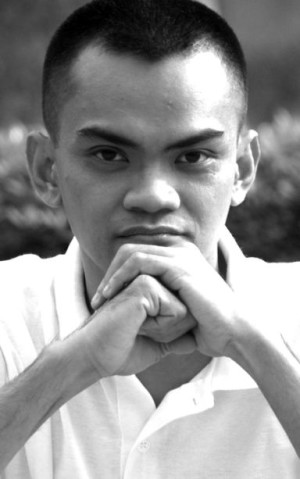
PAREDES
Among the last wishes that the Cebuano artist Manuel Rodriguez Sr. uttered shortly before he died in Florida at the age of 105 last year was for his remains to be brought and buried in the land of his birth.
He was immediately cremated after he died there in the United States, where he spent the last decades of his life as a world-class artist.
But his family made sure that they fulfill his wish and is set to bring to Cebu his ashes to be buried here.
A memorial ceremony highlighted by a Mass will be held on Friday, Jan. 19, at eight in the morning at the Sacred Heart Parish in honor of Mang Maning, as he is fondly called by fellow artists.
Set to celebrate the Mass is Fr. Jason Dy, S.J., an artist-priest who used to run the Sacred Heart Parish Alternative Art Space when he was assigned here few years ago before he moved to London to take his Master of Fine Arts.
Fr. Jason is now in charge of the Ateneo Art Gallery in Manila.
Fr. Jason is well loved by Cebuano artists whom he supported when he was assigned in Cebu.
One of the exhibits held at the Sacred Heart Parish Alternative Art Space under Fr. Jason’s watch was a small exhibition of Mang Maning’s works along with those of other Cebuano artists whom he influenced.
I was among those selected to participate in the exhibition, having met Mang Maning twice to help facilitate his printmaking workshops in the University of San Carlos Department of Fine Arts.
He was then in his late 90s yet still very sharp and active at that time.
As I write this on Saturday, Jan. 13, another memorial ceremony is also being held at the Cultural Center of the Philippines.
The activity is being organized by members of the Printmaking Association of the Philippines, which Mang Maning founded back in the 1960s.
Mang Maning was credited for having promoted printmaking, the unique art form which allows artists to make a limited edition or a series of copies (also called “multiple originals”) of their work, as a serious fine art.
Although printmaking had been around in the Philippines since the Spaniards introduced the practice here centuries ago, it was during the postwar years that Mang Maning struggled to popularize printmaking among the public and for fine prints to be treated as equal in status to painting and sculpture.
To achieve his goal, Mang Maning almost single-handedly organized workshops and opened his own studio-gallery which showcased his own work and those of his artist-friends.
As the mid-century was marked by the rise of abstraction and other modernist styles in the Philippines, Mang Maning sought to reflect that trend in his own work in both printmaking and painting.
He also introduced new techniques, some of which could be applied without the use of an etching press or a machine designed to reproduce prints out of an inked plate bearing the artist’s design.
Mang Maning influenced a lot of younger artists, who later became themselves master printmakers. In the 70s, Mang Maning moved to New York, where he would expand his influence to a more international audience.
For his efforts and dedication to promote printmaking as a kind of “people’s art,” Mang Maning was hailed as the “Father of Modern Printmaking” in the Philippines.
He had been shortlisted many times in the National Artist award.
During his last two visits to Cebu, both the City Hall and the Cebu provincial government bestowed highest honors on the Cebuano artist.
Recognition from home was long overdue but it was better late than never.
At least, the Cebuano master did not pass away without being appreciated and honored by the city where he was born and spent his youth.
On Friday next week, Mang Maning will finally have his final homecoming.
The solemn Mass, which will be held with local artists, friends and his family here in attendance, will be followed with short eulogies by fellow artists, who all looked up to him as inspiration.
It will be a simple and intimate memorial service, a fitting homage coming from those who best understood his contribution as an artist.
The National Artist award eluded him when he was alive. But perhaps it is because he is more international than national.
And yet, in an act of coming full circle, he had to return home.
The artist of global stature becomes humbly local once again.